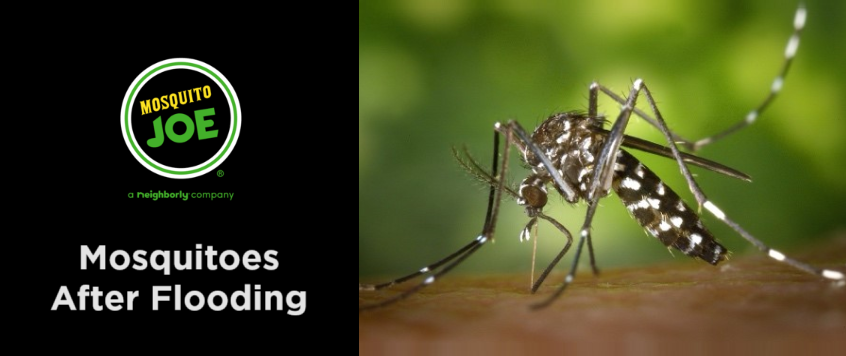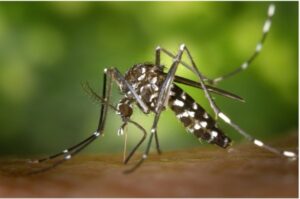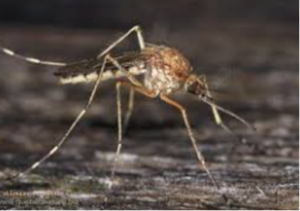Mosquitoes After Flooding


The most obvious impact of flooding is standing water, which you know by now is our major source of mosquitoes. Compounding this issue for our customers is the movement of water from one yard to the next. This water carries mosquito eggs along and deposits a whole new population in your yard.
This water causes a population explosion that can be up to ten-fold of our typical population. Mosquito eggs are incredible. They can sit dormant in the soil for 10 years and hatch when added to water. They can stay frozen in ice for years and hatch when the ice thaws. Everywhere we walk, underfoot and in the soil, millions of mosquito eggs are lying in wait. When flooding hits, drenching the soil and causing puddles, and sometimes small ponds, all those eggs start hatching. It impacts the shorelines of creeks, hatching the eggs laid along its banks. It pulls water down off building sites into yards, it sends water (and eggs) downstream as the creeks fill and water floods south to the ocean.


Adding to this nightmare, are the biting midges in our grass. Their population will also explode after flooding. Biting midges look like a mosquito, but they are out all day and live in the ground and grass.
Here’s a cheat sheet with suggestions you can do to help expedite the decline in mosquito numbers after flooding:
- If you see mosquitoes during the day, and they are black and white striped, they are Asian Tigers. These are container breeders, so look around for anything holding water and remove it. Unfortunately, Asian Tigers fly far and are good at it, so the issue may be in a neighbor’s yard.
- If you are bitten during the day and they look like “baby mosquitoes” or are smaller than the average mosquito, those are biting midges. Clear up leaf litter and pine needles, these guys love decomposing organic matter.
- Keep an eye on your yard after rain. Remove anything that holds water; planters, buckets, outdoor kitchens, kid’s toys like playhouses or water fountains can hold a lot of water inside the plastic and be a big source of mosquito breeding.
- Gutter checks are infrequent in the spring and summer but keep an eye on them. With storms and flooding, leaves will fall, and you may have water standing up there you didn’t notice.
Flooding brings huge mosquito issues, but if you stay on top of the water in your yard you can reduce your numbers dramatically. If you would rather, we do that for you just give us a call!


